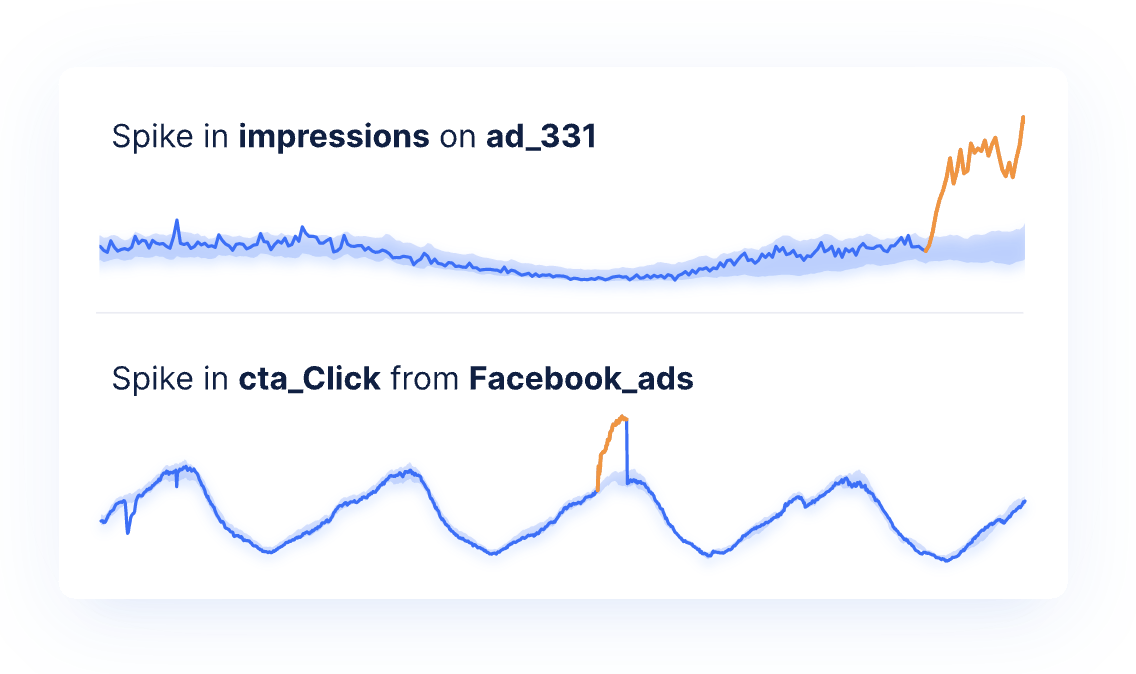The global advertising market is growing and forecasted to exceed $700 billion soon. Much of that growth is attributed to digital advertising aimed at people who are spending more time online, looking at screens, streaming ad-supported music and entertainment, and connecting through social networks. Companies’ spending on digital advertising experienced double digit growth in 2020, despite the pandemic.
Adtech companies are responding to this growing demand with fast-paced programmatic advertising, which utilizes data insights and algorithms to automatically serve ads to the right user, at the right time, on the right platform, and at the right price.
The Importance of Data in Programmatic Advertising
As the world of digital advertising becomes more dependent on this type of programmatic media buying, data is transforming how the adtech industry operates. The data – cost per impression, cost per click, page views, bid response times, number of timeouts, number of transactions per client, etc. –is as important as the money spent on those impressions. The data shows how effective the ad buys really are, thus proving whether or not they are worth the money spent on them. This is one reason that data must be continuously monitored.
The vast array of moving parts in online advertising means that adtech companies need to collect, analyze, interpret, and act upon immense datasets instantaneously, every single day. The insights that come from this massive onslaught of data can create a competitive advantage for those who are prepared to act upon those observations quickly.
Traditional business intelligence tools can’t scale to fully support adtech needs
Addressing the current data analytics needs in adtech can be challenging. With billions of daily transactions, the sheer volume, velocity, and complexity of the data can easily overwhelm conventional business intelligence tools. While traditional BI tools such as dashboards and email alerts offer some support, in general, their capacity in the context of adtech analytics is severely limited. Among the most common problems are:
- Lack of data correlation – Traditional tools may show only one problem, like server latency, but will not show or correlate multiple issues in the same alert, for example, server latency and a dip in conversions due to time-out issues. This can make it difficult to uncover technical anomalies that can dramatically affect revenues.
- Alert fatigue – An overly sensitive monitoring solution can generate large volumes of alerts for even small incidents. The more alerts, the greater likelihood of false positives and the chance that staff will ignore alerts due to lack of time to investigate them all.
- Seasonality issues – Traditional BI tools based on thresholds don’t consider seasonal patterns in data and often end up capturing too many samples that are falsely identified as anomalies.
- BI tools work from hindsight – It can take hours, days or even weeks to find issues and apply remediation when using traditional BI and monitoring tools, making them unsuitable for the fast pace of programmatic advertising.
- Minor undetected issues can cause major losses – Adtech companies can lose hundreds of thousands, if not millions, of dollars due to the passage of time between a business incident and its discovery. If undetected for too long, even minor issues can cause a detrimental disruption to service.
AI in adtech delivers actionable insights
Real-time analysis is the only way for adtech companies to determine whether key indicators are under or over performing. To ensure these companies always have their finger on the pulse of every consequential metric or data anomaly, executives, data scientists, and analysts are turning to real-time machine learning, artificial intelligence (AI/ML), and predictive analytics to help them identify and resolve issues immediately.
With data accumulating at an exponential rate, it’s simply impossible for data analysts to extract relevant and timely business insights without autonomous AI analytics. Adtech companies need a scalable, real-time BI and analytics solution like Anodot, which can handle any number of data variables, intelligently correlating related anomalies that may not be apparent to a human observer.
Best results are achieved with machine learning, which does not require any manual configuration, data selection, or threshold settings, along with algorithms that can handle complex data such as click rates, impressions, and bid duration for every combination of campaign, publisher, advertiser, and ad exchange.
Anodot’s AI-powered business monitoring for adtech
Where traditional BI tools fail due to time delays, data constraints, and complexity, Anodot’s predictive analysis learns data patterns for a variety of KPIs and dimensions and delivers actionable insight through automated anomaly detection.
Anodot’s big data ML algorithms are specifically designed to detect outliers, preemptively identifying trends as well as issues before they become problems, and facilitating optimization and operational maintenance. In real time, Anodot can detect anomalous behavior, correlate multiple anomalies, and then alert the proper teams in order to get a fix in place.
Anodot Helps Xandr Resolve Issues Quickly
Xandr is a massive-scale marketplace that connects the demand side to the supply side in the advertising ecosystem. Ben John, CTO at Xandr, describes what his company went through in trying to solve their data monitoring challenges before engaging Anodot.
“We had to install these agents and run hundreds if not thousands of servers and applications across our global data centers. When a business-critical incident happened, people had to look at the logs, at some of the monitors, and at alerts. They would try to correlate it all to understand the business incident or business impact. That is really hard, and every minute we were losing revenue, and also our customers were losing revenue, so time is of the essence.”
Xandr needed an automated solution that could scale to the company’s rigorous demands, and yet could detect anomalies happening for a single customer in a single region of a global business. They chose Anodot’s cloud-based solution to identify and resolve incidents before they can impact business.
“We reduced the time to detection of root causes from up to a week to less than a day. The complexity of our platform makes manual detection incredibly difficult,” says John. “Before Anodot, it could take up to a week because our platform integrates with so many partners. Now, this data helps us find so many incidents within a few hours or within a day, compared to multiple days and weeks.”
Anodot caught events that resulted in savings of thousands of dollars per event. “Each campaign going through the Xandr platform configures hundreds of thousands, if not millions of ads, and if things go wrong, it can have a significant financial impact. We were able to save lots of money for both Xandr and our customers,” according to John.
Anodot helps keep the Magnite ad exchange working smoothly
With 2.5 times more transactions than NASDAQ, Magnite (formerly Rubicon Project) is one of the largest ad exchanges in the world. More than 90% of people browsing the Internet will see an ad that goes through the Magnite exchange. Using this service, the world’s leading publishers and advertising applications can reach more than a billion consumers.
With 13 trillion monthly bid requests, 55,000 CPUs, and 7 data centers, Magnite’s BI needs were well beyond the scope of what humans could monitor, analyze, and control. Magnite turned to Anodot to track their data in real time to aid in the creation of a fair and healthy ad marketplace.
Anodot’s advanced machine learning-based BI and analytics solution allows the Magnite team to identify trends and correlations in real time. Recently, Magnite was able to instantly correlate a drop in one customer’s bidding activity to system time-outs. Magnite immediately contacted the client and alerted them. The customer identified a bug in a recent software release as the culprit for the time-outs and resolved it quickly to get back in the game.
Magnite also benefited from the added ability to pull existing business intelligence solutions into the Anodot system. Magnite used an open source monitoring tool, so Anodot simply extracted data from the tool, allowing Magnite to streamline and automate data analytics.





